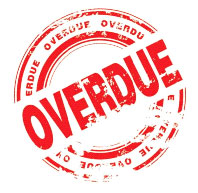The Profit Formula

The Secret Of Six-figure Freelancing
The principle we are going to be talking about here is very simple, yet it is one that is widely misunderstood by freelancers – and by business professionals generally. But if you get to grips with the significance of this simple statement, it can have a profound impact on the way you approach the running of your business.
So what’s the simple secret of six-figure income? Well, it’s just a question of understanding the basic profit formula:
Income = (hourly rate x billable hours) – costs I said it was simple, didn’t I?
What’s important about this is that it is a straightforward mathematical equation. The income you earn is directly related to the rate you charge per hour, the numbers of hours you bill clients for, and the costs incurred by your business.
To maximize your income, then, you only need to concentrate on three factors:
Increasing your hourly rate
Maximizing the number of billable hours
Reducing your business costs.
When you reduce your business proposition to this simple level, it’s easy to see how your business can be improved. All you have to do is work at these three factors one at a time, and you will inevitably increase your income.
And this increase can be substantial. Notice, for example that in our equation, hourly rate is multiplied by billable hours. Just think about this for a moment. It means that if you can achieve a modest increase in your hourly rate, plus a small increase in your billable hours, you will see a big increase in income.
Let’s look at an example. We’ll say that your usual hourly rate is $60 an hour, but ten hours of your working time are taken up by administration, marketing, etc. You are only able to bill for 30 hours a week, so if we ignore general business costs for the moment, your profit formula for a typical week looks like this:
Income = ($60 x 30) – $0 = $1800 That is, you generate a gross profit of $1800 a week.
From our equation, we can see quite clearly that claiming back those lost ten hours – increasing billable hours – would make a real difference. So what if you hired an assistant for ten hours a week? For straightforward administrative work, you might pay around $10 an hour, costing you a total of $200 a week. But you now have an extra ten hours of billable time, and your profit formula looks like this:
Income = ($60 x 40) – $200 = $2200
So now you are working exactly the same number of hours each week, and charging the same rate for your clients – yet your income has increased by $400 a week. That’s over $20,000 a year!
Mistakes That Can Kill Your Business

In the next few chapters of this book, we will be taking a detailed look at each factor in the profit formula, to see how you can enhance the efficiency of your business. But right now, we’re going to look at some of the mistakes that freelancers make, and see how they could be avoided by keeping the profit formula in mind.
Underestimating Your Worth
One of the most common mistakes made by freelancers is to put too little value on their time. Offering cheap rates is often seen as a way of securing work that you might otherwise lose, in the hope of winning higher rates later on.
It rarely works like that. Once you have established yourself as someone who will accept low rates, you will find it very difficult to raise your rates. After all, if you were only worth a low rate last week, why should anyone pay you more this week?
Giving Away Too Much!
If you asked an attorney to attend an introductory meeting 50 miles away, free of charge, what kind of response do you think you would get? Once you had administered treatment for shock you would probably discover your attorney had an impressive array of four-letter words to use on just this sort of occasion.
Freelancers, however, often give away time as if it was an unlimited resource – which it most definitely is not.
In reality, of course, you do need to invest some time in converting new prospects into clients – but use it wisely. Be sure to weigh up the potential of the client against the commitment you are being asked to invest.
If it all adds up, that’s great. But if it doesn’t, don’t be afraid to politely decline.
Failing To Track Time
![]()
Freelancers often give away time unconsciously, too.
This is even worse, as you are giving away billable hours without getting anything, even the prospect of work, in return. This is caused by a simple failure to track your time effectively. If you haven’t recorded how much time you have spent on a project, how can you possibly present an accurate bill?
Letting Costs Run Out Of Control
Rising costs tend to be associated with rising success. As soon as those lucrative contracts start rolling in, it’s tempting to spend the money as fast as you earn it – or even faster.
It’s easy to convince yourself that you need a new convertible to impress your clients, or that you can’t possibly work without the latest hi-tech, high-cost equipment.
But take care.
It’s always easier to spend money than to earn it. Remember that reducing costs is a vital element in the profit formula, and consider your expenditure accordingly.
Poor Credit Control

We’ve seen how you can apply the profit formula to increase your income. Remember, however, that you haven’t earned anything until the money is in the bank. An invoice for work completed means nothing if you can’t convert it into the equivalent amount of hard cash.
Big companies have big credit control departments for a reason – they are critical to financial success. If you take credit control seriously in your business, you will really feel the difference in your day-to-day cash flow – and profits.
Applying The Formula To Make Your Fortune
We will be looking at some of the above issues in more detail later on. For the moment, however, let’s concentrate on the basics of using the profit formula to advantage:
Keep It Simple
It’s easy to let complexities cloud your judgment, with the result that you sometimes can’t see the wood for the trees. But remember that whatever the nature of your business, the underlying dynamics are the same. If you concentrate on increasing your rates, maximizing billable hours and reducing costs, your business will be on track for success.
Don't Compromise
Every time you agree to a lower rate, an unreasonable time estimate or unnecessarily high expenditure, you are chipping away at your formula for success. Try to stick to your guns and get the deal that you and your business deserve.
Review Constantly
With the best will in the world, circumstances change over time.
The efficient regime that you initiate in your New Year’s resolution can soon dissipate into a half-hearted approach to business. Make a point of reviewing your progress on a regular basis, to see how your business is performing. If you’re not making the progress you should, get back to the drawing board and start again.
The profit formula is certainly simple, but it lies at the heart of every successful freelance business. So take some time to review your business now, and see how you can take the next step forward in your career.
Site Links
